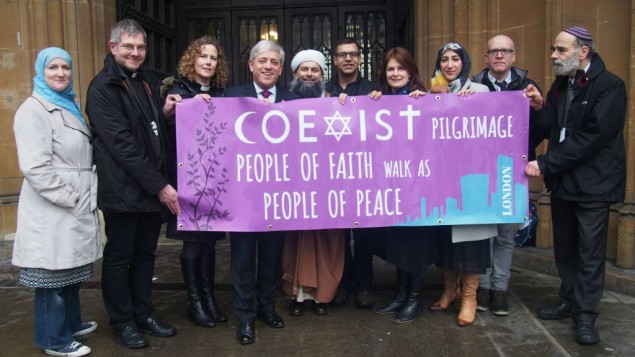

Image for representation purpose only
Together across Central Park
New York city is divided by Central Park into an east and a west side. We New Yorkers joke about the cultural differences between the two parts of town: how society ladies dress up to go grocery shopping on the East Side while famous writers wear blue jeans to the theatre on the West Side. But there are other cultural divides that Central Park displays and these can loom much larger in our imaginations.
I live and work on the West Side of Manhattan. When I travel by taxi over to the East Side, the 96th street mosque emerges before me. Despite its starkly modern structure, many are tempted to think it contains a congregation with a medieval mind-set.
In the weeks before Passover, the imam of that mosque, Shamsi Ali, travelled with some of his congregants across Central Park to visit us at the Jewish Theological Seminary (JTS) where I teach. In a short sermon there he spoke frankly about the issues that divide Jews and Muslims politically but also noted how much unites us religiously. He was received enthusiastically and with full attention, as a close neighbour should be.
We reciprocated and in so doing were reminded that the distance across the Park can be a short walk. Several members of my Jewish community went to Friday prayers at the 96th street mosque. The imam invited me to stand next to him in the prayer line and during his Friday sermon, as he spoke from Koranic texts, he taught his congregation that there is no compulsion in religion and that each religious community has its own path to god. He preached that Muslims must reach out in friendship to their neighbours and warmly welcomed us Jewish visitors.
If I had ever wondered what imams preached in their mosques, I then knew – this was emphatically not a medieval way of thinking. Instead, I had just heard a vision for the 21st century, a modern call to brotherhood as eloquent as any ever preached.
Imam Ali then called upon me, a rabbi, to address the almost 1,000 Muslims assembled. I had just published a historical novel, A Delightful Compendium of Consolation, Pset in 11th century North Africa. It is a story about a time when Jews and Muslims lived together in harmony. At his suggestion, I invoked those halcyon days yet recognised the difficult relations that Jews and Muslims experience today.
I shared with them how some of their mosque members had visited our seminary and how Imam Ali had also brought prominent imams from Indonesia to visit us. And I proudly related that under the auspices of the US state department our seminary has also welcomed imams from Egypt, Jordan, Kuwait and Saudi Arabia over the past three years.
I noted how essential it is for neighbours to work together to help one another since New York is a city with so many needy people. I spoke of our joint plans to bring together the Islamic Cultural Centre and Jewish Theological Seminary to work side by side at a local soup kitchen. It remains clear that there is so much we can do to serve our broader community together. There are so many ways we can, each from our own traditions, perform god’s commandments through joint efforts.
When my short sermon and the Friday service were completed dozens upon dozens of Muslims – black, brown, white and every colour in between, American and foreign-born – came to shake my hand and welcome me. They identified with the need to respect one another. They expressed their unbridled enthusiasm for our joint projects. They spoke of their pride in their mosque and their happiness that their imam had taken the first step. Mostly, by their warmth and hospitality they spoke to the common bond between us.
Through such simple acts we were reminded how coexistence can be strengthened and some small redemption achieved – just by crossing Central Park.
Archived from Communalism Combat, September 2008, Year 15, No.134 – Breaking Barriers 2
This article, posted on August 26, 2008, is part of a series on Jewish-Muslim relations written for the Common Ground News Service.
Courtesy: www.commongroundnews.org
